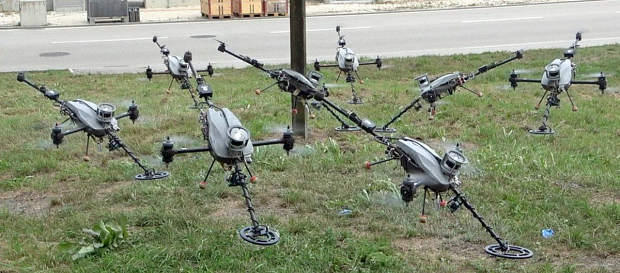Metal-Detecting Drone Could Autonomously Find Land Mines Scanning Uneven Terrain

As reported by IEEE Spectrum, a novel combination of a metal detector and a drone with 5 degrees of freedom is being developed at the Autonomous Systems Lab at ETH Zurich to provide a viable solution to remote land-mine detection. It uses careful sensing and localization along with twisting motors to keep the detector reliably close to uneven ground. If a conventional drone is not flying over a perfectly flat surface the metal detector won’t be ideally positioned to detect mines, and some will be missed. 12,000 square kilometers worldwide are uninhabitable because of the threat of buried explosives, and according to the International Committee of the Red Cross (ICRC), thousands of people are injured or killed every year by accidental detonations of buried explosives. Wildlife is similarly at risk. The composite photo shows multiple positions of a tricopter drone with a lidar and metal detector flying around an obstacle close to the ground.
A metal detecting drone with 5 degrees of freedom is under development at the Autonomous Systems Lab (ASL) at ETH Zurich. It may provide a viable solution to remote land-mine detection, by using careful sensing and localization along with some twisting motors to keep the detector reliably close to the ground. Learn more about ASL here.
Thanks to CDR David Place (USN/Ret), davidplace47[at]gmail[dot]com, and Robin E. Alexander, President ATC, alexander technical[at]gmail[dot]com, for their assistance with this report, the background for which appeared in their # 23 - 4 -31 MARCH 2023 edition of the UNMANNED SYSTEMS NEWS (USN). Our thanks, also, to CAPT Julio Guiterrez (USN/Ret) for sourcing this information.
David distributes the USN, a free, comprehensive newsletter in PDF format every week or two, as well as serial news flashes, from which this NREF news update was sourced. To be included in his distribution, simply send a subscribe request to davidplace47[at]gmail[dot]com.
